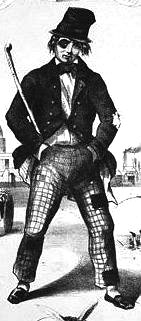Venue Type & Location
Overview
AKA: Mrs. Morrison's Grand Opera House
Address: 9-15 Adelaide St. W (pp.13)
The Toronto City Directory for 1888. R.L. Polk, 1888. static.torontopubliclibrary.ca/da/pdfs/1316282_4.pdf
"Grand Opera House
Toronto's Grand Opera House, located on Adelaide Street, west of Yonge Street in Toronto, opened to the public on 21 September 1874 and was managed by the remarkable and popular Charlotte Morrison. The building was erected by the Grand Opera House Company, with Lalor and Martin of Toronto as architects andT.D. Jackson of New York the consulting architect.
The new Grand Opera House measured ninety-one feet by 208 feet, presenting a four-storey entrance front on Adelaide Street, described by one reviewer as a 'handsome rendering of florid Parisian renaissance.' A more flattering description attributed to the architects before opening, the Mail of 30 March 1874, stated there would be an inclined passage fifteen feet wide leading from the street to a glass roofed vestibule, which in turn was to connect directly to the main seating level of the house. On either side of the vestibule space, stairs would lead to upper galleries. According to the Canadian Illustrated News of 29 August 1874, the Grand had a 'seating capacity of 1323 and campstool and standing room for 500 more.' Although accounts of seating distribution differ, there were 620 folding opera chairs upholstered in crimson rep in the orchestra stalls, with the remaining seats in the dress circle, family circile, and eight private boxes, each of the latter having four loose chairs [...]
In the 30 March 1874 issue of the Mail, the stage is described as being thirty-five feet wide by fiftey feet deep. Little evidence, so far, has been found to indicate what sort of fly loft existed over the stage, or how the scenery was moved about, except perhaps for the Bell Smith sketches, which show a stage of ample proportiaons having a loft height approaching forty-five feet. backstage elements were placed along the west side of building on three floor levels, including cast dressing-rooms, green room, property room, manager's office, and other facilities. A lane flanking the building on the east gave direct access to the stage.
The Grand Opera House burned on 29 November 1879, although apparently not to the ground, since it was reconstructed in fifty-one working days, reopening on 9 February 1880. Few changes were made in the house, it seeems, althrough Julius Cahn's Official Theatrical Guide of 1900 gives a total seating capacity of 1,707, a figure hard to accept when it is compared wit the original house capacity of 1,323. After the turn of the century, the Grand lost its place as Toronto's leading theatre, eclipsed first by the Princess and later by the Royal Alexandra. It had been empty for many years when in June 1928 it was pulled down." (pp.222-224)
Fairfield, Robert. "Theatres and Performance Halls." Early Stages: Theatre in Ontario 1800-1914. Editor Ann Saddlemyer. University of Toronto, 1990. pp. 214-287.
Major musical and theatrical institution.
DETAILS OF SITE LOCATION: Located at 11 Adelaide Street West, the opera house was on the south side of Adelaide between Yonge and Bay. On its west side was a lane way named Johnson's Lane, now named Grand Opera Lane.
Boundary History: Bounded by Adelaide on the north side, Johnson's Lane on the west side, an unnamed lane on the east side, and backing onto an empty lot leading south to the Manning Arcade and the North of Scotland Chambers. Near its southwest corner were the Empire newspaper offices.
CURRENT USE OF PROPERTY: A building housing Wood Gundy.
HISTORICAL DESCRIPTION: The Grand Opera House was built in 1874 to become the major venue in the city for grand opera and for important theatrical performances. It fulfilled its ambitions and more. It opened in September 1874 with Sheridan's School for Scandal, then hosted a succession of international singing and stage stars. A fire destroyed the building in 1879, but it was rebuilt in only 51 days! Maurice Barrymore (father of Lionel, John, and Ethel) appeared there, as did Ellen Terry, Sarah Bernhardt, and a host of others. The Toronto Philharmonic Society gave concerts, including Handel's Messiah with singers from Mrs. Morrison's Opera Company. This event was pictured in the Canadian Illustrated Newsissue of January 1875. Mrs. Charlotte Morrison owned and managed the opera house, and gave it a brilliant record. O.B. Sheppard was a later manager, and moved on to manage the Princess. But it was mainly, and sadly, Ambrose Small for whom the opera house is remembered. Small was in the process of closing a sale of his theatrical assets to a syndicate, Trans Canada Theatres Ltd., when he vanished without a trace. At the end of her life, his wife confessed to murdering him and burning half of his dismembered body in the furnace of the opera house and disposing of the other half in the Rosedale Ravine. The case was never solved and remains a mystery today. The Small affair has overshadowed the brilliant history of the performing arts in the opera house, which brought the best in the world to Toronto and gave local talent many opportunities to shine. The Grand Opera House also demonstrated clearly that home grown impresarios had what it takes to reach the highest success. In 1927, eight years after Small's disappearance, the opera house was demolished.
REFERENCE SOURCES: Miles' Atlas 1878; Goad's Atlas 1884, 1890, 1900, 1910; Joan Parkhill Baillie, Look at the Record, 1985; Fred McClement, The Strange Case of Ambrose Small, 1974; Community History Project collections.
RELATIVE IMPORTANCE: No performing arts facility in Toronto's history quite equals that of the Grand Opera House. It is recalled in the name of the lane way existing today.
PLANNING IMPLICATIONS: In a densely developed section of the lower city, no archaeology is ever possible, but a large, permanent display giving some idea of its brilliant performing arts history should be encouraged for permanent mounting in the building that replaced it.
"Grand Opera House." Toronto Historical Association. torontohistory.net/grand-opera-house.html

